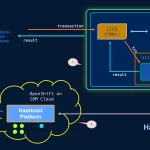
Next-Gen Caching Solutions: Maximizing Web Performance with Edge Caching
- Post
- August 8, 2023
- Caching, Web Performance, Web Technologies
- 0 Comments
In the ever-evolving landscape of web performance optimization, caching stands as a stalwart technique, and among its modern iterations, edge caching emerges as a pivotal solution. As the digital realm becomes increasingly reliant on instant access and seamless experiences, the implementation of efficient caching mechanisms becomes paramount. In this article, we delve into the realm of next-gen caching solutions, focusing on the prowess of edge caching and its profound impact on web performance. Let’s explore how this technique revolutionizes the way we perceive and interact with online content.
The Essence of Caching: A Brief Overview
Caching, in its fundamental essence, involves the storage of frequently accessed data in a manner that accelerates retrieval times and minimizes redundant requests to the origin server. Traditional caching methods, often implemented at the server or client level, have paved the way for improved load times and reduced server strain. However, the emergence of edge caching has taken these benefits to an entirely new echelon.
Edge Caching: A Paradigm Shift in Performance Optimization
Unveiling Edge Caching’s Core Concept
Edge caching introduces a paradigm shift by distributing cached content across a network of edge servers strategically positioned closer to the end-users. This approach mitigates latency, bypasses network congestion, and ensures lightning-fast content delivery. When a user initiates a request, the content is retrieved from the nearest edge server rather than the origin server, yielding remarkable load time reductions.
The Architecture Underpinning Edge Caching
The architecture of edge caching leverages Content Delivery Networks (CDNs) to orchestrate the distribution of cached data. CDNs comprise a network of servers scattered across various geographical locations. These servers store cached content and collaborate to ensure optimal content delivery. The synergy between edge servers and CDNs underlines the efficiency of edge caching.
Embracing the Impact: Edge Caching and Web Performance
Unparalleled Load Time Optimization
One of the most palpable impacts of edge caching is its ability to optimize load times. By diminishing the physical distance between the user and the content source, latency is significantly reduced. This translates to near-instantaneous content retrieval, thereby elevating user experiences and engagement levels.
Alleviating Server Strain
Edge caching’s knack for diverting traffic away from the origin server carries the ancillary benefit of reducing server strain. As edge servers cater to content requests, the load on the origin server is substantially lightened, resulting in enhanced server stability and improved website scalability.
Fostering Mobile-Friendly Experiences
In an era where mobile devices dominate internet usage, edge caching proves to be a game-changer. Mobile users, often relying on less stable networks, stand to gain immensely from the decreased latency and optimized load times offered by edge caching. This translates into smoother browsing experiences and increased user satisfaction.
Implementing Edge Caching: Best Practices
Analyzing Content Patterns
To leverage edge caching effectively, an in-depth analysis of content consumption patterns is imperative. Identifying frequently accessed resources empowers developers to strategically cache content that offers the most substantial performance enhancements.
Dynamic Content Handling
While edge caching excels in optimizing static content delivery, handling dynamic content requires finesse. Employing cache invalidation strategies and adopting technologies like Edge Side Includes (ESI) ensures that users receive up-to-date dynamic content without compromising performance gains.
Final Words
In the ever-accelerating digital landscape, where milliseconds can define success, edge caching emerges as a beacon of performance optimization. With its ability to transcend geographical barriers and deliver content at unprecedented speeds, edge caching has become the cornerstone of next-gen web performance enhancement. By embracing this innovation, businesses can unlock a world where seamless user experiences harmonize with efficient resource utilization, laying the foundation for a brighter digital future.
Commonly Asked Questions
Q1. How does edge caching differ from traditional server caching?
A1. Edge caching involves distributing cached content to geographically dispersed edge servers, drastically reducing latency. Traditional server caching stores content at a single location, leading to potentially longer load times.
Q2. Can edge caching handle dynamically generated content?
A2. Yes, edge caching can handle dynamic content through techniques like cache invalidation and Edge Side Includes (ESI), allowing for both performance optimization and up-to-date content delivery.
Q3. Is edge caching suitable for all types of websites?
A3. Edge caching benefits a wide range of websites, particularly those with a global user base or content that remains relatively static. Dynamic-heavy sites might need additional strategies for optimal implementation.
Q4. Does edge caching require technical expertise to implement?
A4. While a certain level of technical knowledge can be helpful, CDNs and hosting providers often offer user-friendly tools to implement edge caching without extensive technical expertise.
Q5. How can I measure the impact of edge caching on my website’s performance?
A5. Utilize tools like Content Delivery Metrics (CDM) and real-user monitoring (RUM) to track load times and user experiences before and after implementing edge caching.



